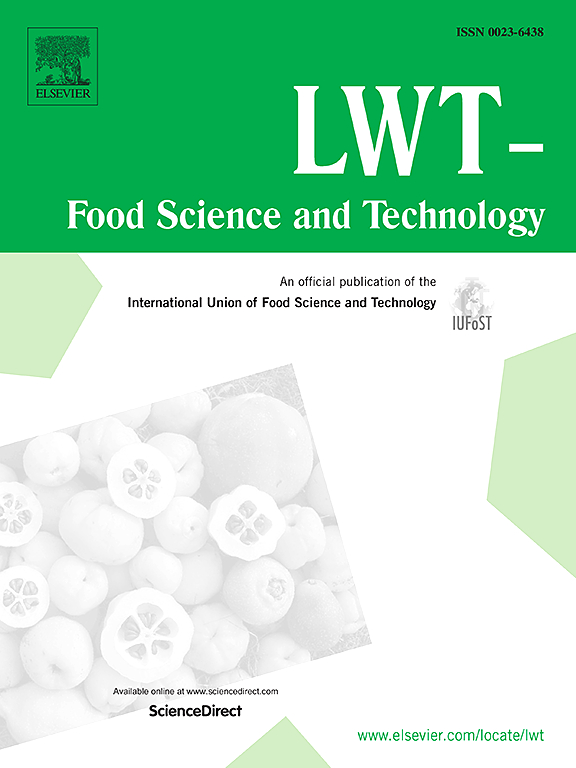An oleogelator extracted from filter sludge of cane sugar manufacture: A comparative study of microstructure, crystallization kinetic and rheological properties
IF 6
1区 农林科学
Q1 FOOD SCIENCE & TECHNOLOGY
引用次数: 0
Abstract
Filter sludge, the byproduct of cane sugar manufacturing industry, has potential value owing to its functional components. However, its current applications are limited to fertilizers or forage. This study aimed to enhance the value of filter sludge by extracting sugarcane wax (SW) as an oleogelator through polar solvent thermal treatment. Gas chromatography–mass spectrometry analysis revealed that SW contains six linear higher aliphatic acids that promote triacylglycerol (TAG) alignment and fat crystal formation. Several oleogels were prepared with the addition of beeswax, American candelilla wax, Japanese candelilla wax, sunflower wax, SW, and caraway wax. In comparison, the oleogel structured by SW displayed a relatively stronger crystalline network. The crystals induced by SW displayed small crystal clusters with uniform distribution and density. The difference in morphologies was attributed to the different molecular structures of waxes. Herein, SW was demonstrated as the oleogelator that accelerated the formation of supramolecular network. Subsequently, a rigid crystalline network was constructed with solid characteristics being endowed to the oil phase. These findings provided a feasible strategy for utilizing byproducts of cane sugar manufacturing industry to develop a healthy solid fat applicable as a hydrogenated oil substitute in the food industry.
从甘蔗制糖过滤污泥中提取的油凝胶:微观结构、结晶动力学和流变性能的比较研究
过滤污泥是甘蔗制糖工业的副产品,其功能成分具有潜在的利用价值。然而,它目前的应用仅限于肥料或饲料。本研究旨在通过极性溶剂热处理提取甘蔗蜡作为油凝胶剂,以提高过滤污泥的使用价值。气相色谱-质谱分析表明,SW含有6种线性高级脂肪酸,可促进三酰甘油(TAG)的定位和脂肪晶体的形成。以蜂蜡、美国小烛台蜡、日本小烛台蜡、向日葵蜡、SW和葛缕子蜡为原料制备了几种油凝胶。相比之下,由SW结构的油凝胶显示出相对较强的晶体网络。SW诱导的晶体呈小晶簇状,分布均匀,密度大。蜡质分子结构的不同是造成蜡质形态差异的主要原因。在此,SW被证明是加速超分子网络形成的聚脂剂。随后,构建了具有固体特征的刚性晶体网络。研究结果为利用甘蔗制糖工业的副产品开发一种健康的固体脂肪作为食品工业氢化油替代品提供了可行的策略。
本文章由计算机程序翻译,如有差异,请以英文原文为准。
求助全文
约1分钟内获得全文
求助全文
来源期刊

LWT - Food Science and Technology
工程技术-食品科技
CiteScore
11.80
自引率
6.70%
发文量
1724
审稿时长
65 days
期刊介绍:
LWT - Food Science and Technology is an international journal that publishes innovative papers in the fields of food chemistry, biochemistry, microbiology, technology and nutrition. The work described should be innovative either in the approach or in the methods used. The significance of the results either for the science community or for the food industry must also be specified. Contributions written in English are welcomed in the form of review articles, short reviews, research papers, and research notes. Papers featuring animal trials and cell cultures are outside the scope of the journal and will not be considered for publication.
 求助内容:
求助内容: 应助结果提醒方式:
应助结果提醒方式:


